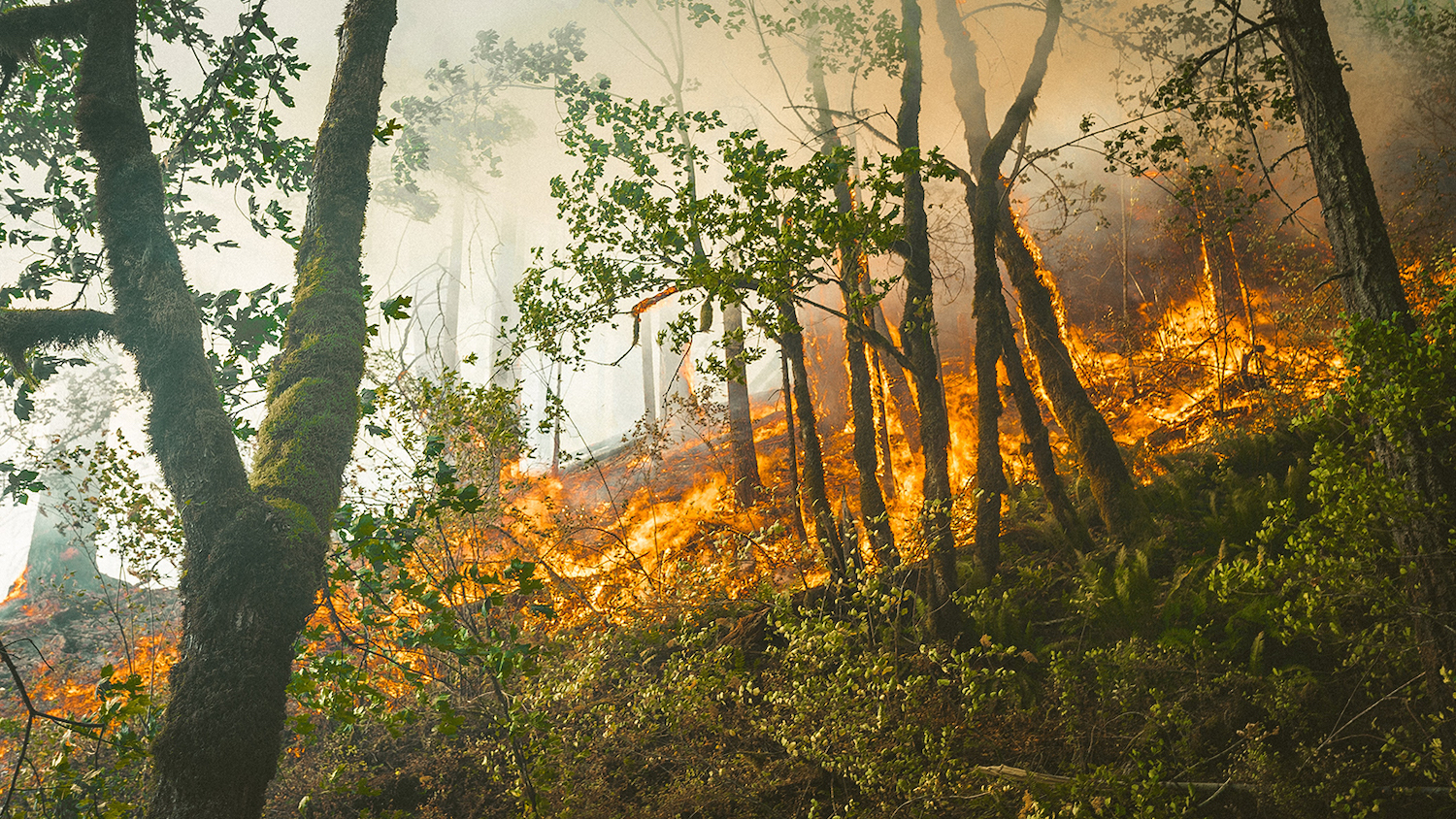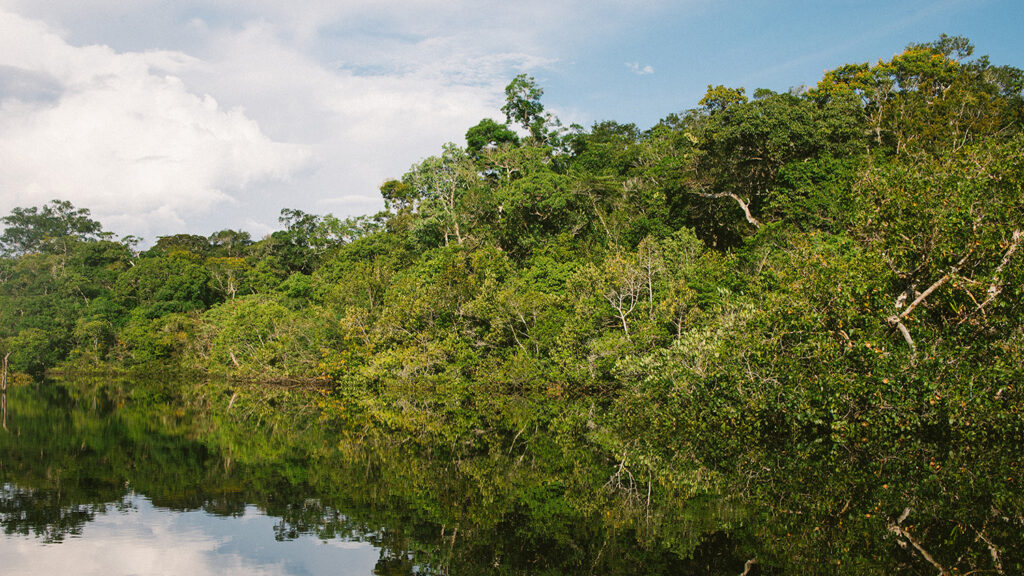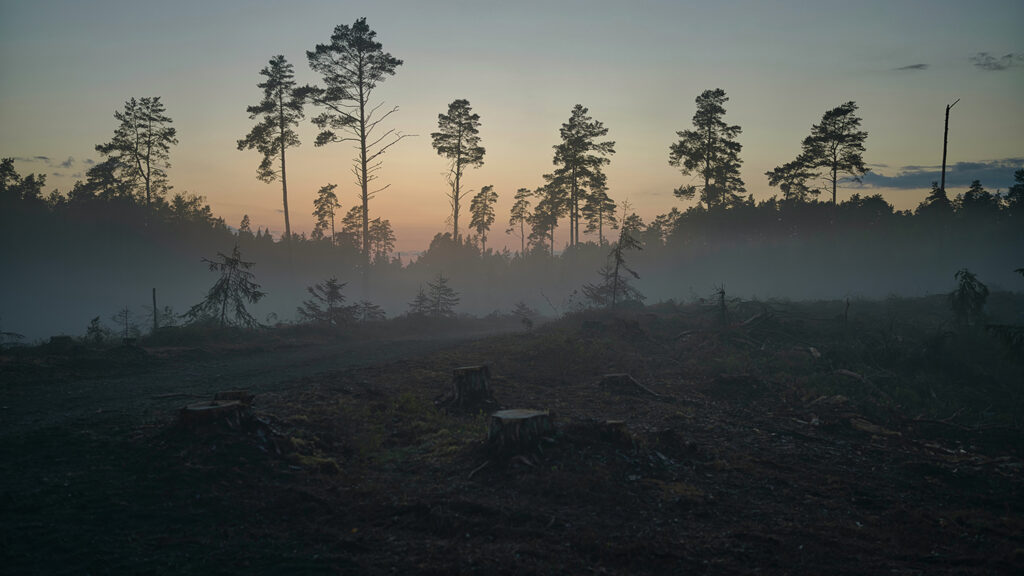Amazon Rainforest Fires: Everything You Need to Know

Thousands of fires continue to burn across the Brazilian Amazon.
Since January, a staggering 121,000 fires have broken out across Brazil — and more than half of those fires are taking place in the Amazon, according to the country’s National Institute for Space Research.
The fires are destroying the homes of indigenous tribes, threatening millions of animals, and even darkening the skies over major cities.
We spoke with some of our own researchers in the College of Natural Resources to learn more about the fires and what’s at stake. Here’s what we found out.
What caused the Amazon fires?
Similar to the United States and Canada — where wildfires are typically caused by humans — the fires in the Amazon are nearly all man-made.
These fires, however, are often deliberately set as part of slash-and-burn agriculture — a method of growing food in which farmers and cattle ranchers deliberately cut down and burn forestland to clear it for crops and livestock, according to Dr. Erin Sills, the Edwin F. Conger Professor and director of international programs in the Department of Forestry and Environmental Resources.
“Slash-and-burn agriculture has been practiced for thousands of years in forests around the world, especially in the tropics,” Sills said. “Farmers cut down trees at the end of the dry season and then burn them right before the rains start. This leaves a nutrient-rich layer of ash on the ground that provides fertilizer for crops.”
For nearly two decades, Sills has studied the impacts of deforestation and climate change in the western Brazilian Amazon as a member of Connections Between Water and Rural Production — a consortium of university researchers funded by the National Science Foundation.
Her research interests include markets and payments for non-timber forest benefits, forest-based livelihoods and economic development, international forest policy and sustainable forest management, deforestation and land use in the tropics, economic assessment of invasive species policies, and program evaluation with matching methods and panel data.

Sills said slash-and-burn agriculture is a common practice in the tropics during the dry season, which in the western Brazilian Amazon, runs from June to August.
After a significant reduction in forest clearing in the Brazilian Amazon from 2004 to 2012, both deforestation and fires are on the rise. The rate of fires in the Amazon has risen by more than 85% since last year alone.
Many critics say the policies of Brazilian President Jair Bolsonaro are to blame for the increase in deforestation and fires.
Since Bolsonaro took office in January, his administration has reduced the budget of the country’s environmental protection agency by 24 percent, fired the director of the National Institute for Space Research, and canceled a range of environmental fines. Brazil has lost more than 1,330 square miles of forest cover to development since Bolsonaro took office.
“There’s not a severe drought in the Amazon this year, so the fires seem to almost certainly be a result of the current political situation in Brazil,” Sills said. “Landowners believe the government is going to stop enforcing environmental regulations, so they’re setting fires without paying much attention to fire breaks or timing.”
Why are the Amazon fires such a big deal?
While the bulk of the Amazon remains intact, the increasing rate of deforestation and fires could have dire consequences for the rainforest and the world, especially as global temperatures continue to rise.
“The Amazon is extremely important to our global environment,” said Dr. Josh Gray, an assistant professor at NC State’s Center for Geospatial Analytics and Department of Forestry and Environmental Resources. “Our lives would be very different without it.”
Spanning more than 2 million square miles across northern South America, the Amazon is the world’s largest rainforest and is home to millions of plants and animals, ranging from poison dart frogs to jaguars. This abundance of life is vital to the survival of human societies, providing everything from raw materials to functioning ecosystems.
Unfortunately, though, the Amazon evolved for millions of years without fire, meaning unlike some other forests where fire is a natural and necessary part of the ecosystem, its plants and animals simply lack the necessary adaptations to survive the heat.

In addition to its biodiversity, the Amazon plays a crucial role in regulating the climate, with its trees absorbing and storing millions of tons of carbon dioxide — a key greenhouse gas that drives global climate change. Deforestation releases this trapped carbon into the atmosphere.
“Trees release their stored carbon back into the atmosphere when they die,” Gray said. “Burning releases it immediately though.”
Sills added that the fires will likely have a more direct and immediate impact on the indigenous communities actually residing in the Amazon.
The Amazon is home to more than 30 million people, including 350 indigenous and ethnic groups, who rely on the rainforest for food, shelter, clothing and even medicine.
Deforestation can also trigger changes in rainfall patterns and lead to longer dry seasons, putting agricultural productivity at risk as the warmer and drier conditions make it harder for the Amazon’s communities to grow crops and raise livestock.
How are the Amazon fires being addressed?
The fires in the Amazon have escalated into a global political crisis, with millions of people taking to social media — and the streets — to demand action against the fires.
Faced with anti-government protests and international backlash, Bolsonaro’s administration has deployed troops in the Amazon to combat the fires and has issued a decree temporarily banning the use of fire to clear land throughout the country.
But extinguishing the fires won’t be easy, according to Dr. Joseph Roise, a professor in the Department of Forestry and Environmental Resources, who specializes in wildland fire behavior.
Slash-and-burn operations produce heavy loads of burned material that fuel hotter, longer fires. These types of fires can be even more difficult to control compared to wildfires, especially during periods of severe drought when vegetation is extremely dry and flammable.

While the Amazon isn’t currently experiencing a drought, the Brazilian government likely doesn’t have the resources to control thousands of fires across such a vast landscape, according to Roise.
He added that the best fire prevention technique is to control deforestation and manage agricultural activities, while respecting the fact that slash-and-burn agriculture is an economic necessity for rural communities in developing countries.
“The people in the Amazon are people like us,” Roise said. “They just want to farm their land and make enough money to survive with their families. The government of Brazil has changed its policy on deforestation. That’s the bigger problem.”
What can be done to stop deforestation?
In response to rapid deforestation in the Amazon, the Brazilian government reformed its forest laws in 2004, resulting in a wide range of new regulations and policies aimed at stopping deforestation while promoting economic activity, according to Sills.
Now that the country’s deforestation rates have once again increased, researchers like Sills and Gray are working to better understand the role these policies played in the mitigation of deforestation and the promotion of sustainable forest management.
Recently, for instance, Sills and collaborators examined the effectiveness of the “green municipality” program in the eastern Amazon. This state program — which was motivated largely in response to the federal government’s adoption of policies holding local jurisdictions responsible for deforestation within their borders — ultimately aims to help those local governments reconcile the federal government’s deforestation limits with local demands for economic development.
After studying the program, Sills and her collaborators found evidence that municipalities that participated in the program were able to maintain higher levels of economic activity, even in the face of the federal mandate to reduce deforestation.

Currently, Sills is working with Gray to use remote sensing to examine the impacts of timber concessions on deforestation rates in Indonesia.
While Sills uses rigorous statistical approaches to evaluate the impact of policies and measures that promote sustainable forest management, Gray develops remote sensing algorithms that blend imagery from multiple Earth-orbiting satellites to provide a long-term and consistent record of vegetation change throughout the region. Their preliminary work so far shows that concessions have saved over 400 square miles of rainforest on the island of Borneo since 2000.
Gray and Sills both said they hope to eventually expand their research to other parts of the tropics, including the Amazon. They noted, however, that while remote sensing has the potential to provide an increasingly accurate impact assessment, it doesn’t account for the social, political and economic systems of each region and requires significant input from those on the ground to fully understand the effects of policy on deforestation.
“Any pattern of deforestation requires an understanding of the context of which it’s happening,” Gray said. “We have to keep that in mind when drawing conclusions about why some policies work and don’t work.”
As for the future of the Amazon, Sills said she most fears the long-term impacts of Bolsonaro’s policies on deforestation rates and environmental research.
“I’m not hopeful right now,” Sills said. “All of the fantastic institutional and human resource capacity in Brazil that once made it possible to bring down deforestation is now being hollowed out by this administration.”


